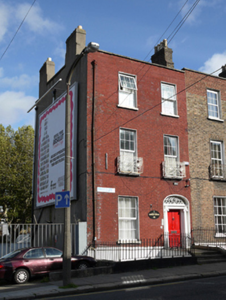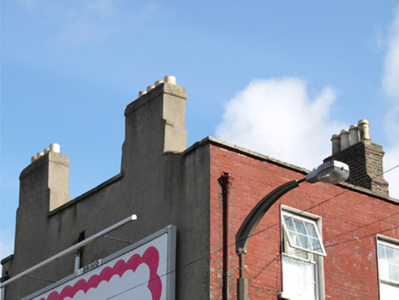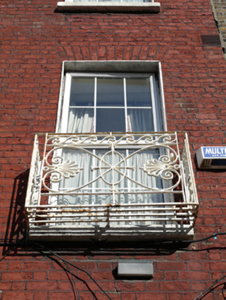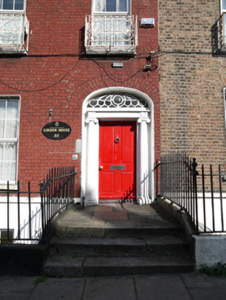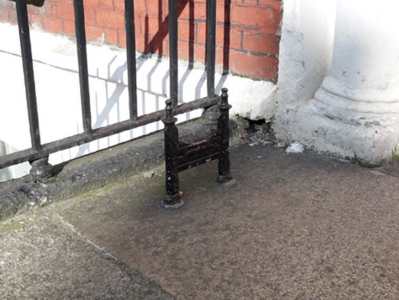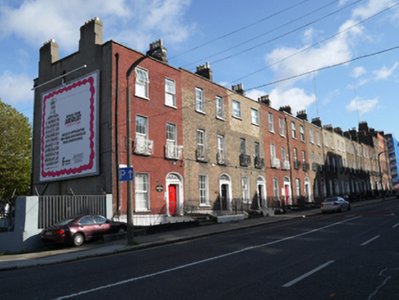Survey Data
Reg No
50010776
Rating
Regional
Categories of Special Interest
Architectural, Artistic
Original Use
House
In Use As
Apartment/flat (converted)
Date
1820 - 1840
Coordinates
316021, 235684
Date Recorded
07/10/2011
Date Updated
--/--/--
Description
End-of-terrace two-bay three-storey house over exposed basement, built c.1830, with chamfered rear corner. Now in multiple occupancy. M-profile slate roof, hipped to north of rear pitch, behind rebuilt parapet wall with granite coping and cast-iron hopper and downpipe breaking through to north end. Two rendered chimneystacks rising from north gable and further pair of stepped brick chimneystacks to south party wall, all having clay pots. Painted brick walls laid in Flemish bond, rebuilt to top floor and laid in English garden wall bond, set on painted granite plinth course above rendered basement wall. Cement rendered walls to gable and rear elevations. Gauged brick flat-arched window openings with patent rendered reveals, painted granite sills and replacement uPVC windows throughout. Cast-iron balconettes to first floor windows. Gauged brick three-centred arched door opening with moulded masonry surround and painted masonry Ionic doorcase, with replacement timber door flanked by engaged Ionic columns on plinth bases supporting panelled lintel cornice with wreath motifs and original teardrop fanlight. Door opens onto granite platform with cast-iron bootscraper and three granite steps bridging basement area. Platform and basement enclosed by original wrought-iron railings on moulded granite plinth wall enclosing basement area. North gable wall now in use for advertising billboard. Full-height canted bay to rear elevation with round-headed stair-hall window openings to rear elevation. Side and rear area enclosed by replacement steel railings and used as parking and enclosed to North Circular Road by tall rendered wall.
Appraisal
This former townhouse terminates the north end of a terrace of six houses that were developed and appear on the 1837 O.S. map, with the next six houses appearing on a later map, yet all were erected in an identical style. Although smaller than those on the south end of the street, these houses are embellished with equally decorative elements resulting in a pleasingly coherent streetscape. Belvedere Place was laid out in 1795, and named after the Earl of Belvedere, as one of eight planned streets connecting Mountjoy Square with major thoroughfares. The house retains a good doorcase and a fine fanlight, providing the decorative focus of the building. The front railings and steps provide an appropriate finish to the street edge, and the house forms a component part of an impressive terrace that extends the grandeur of Mountjoy Square to the north in an orderly rhythmic fashion.

